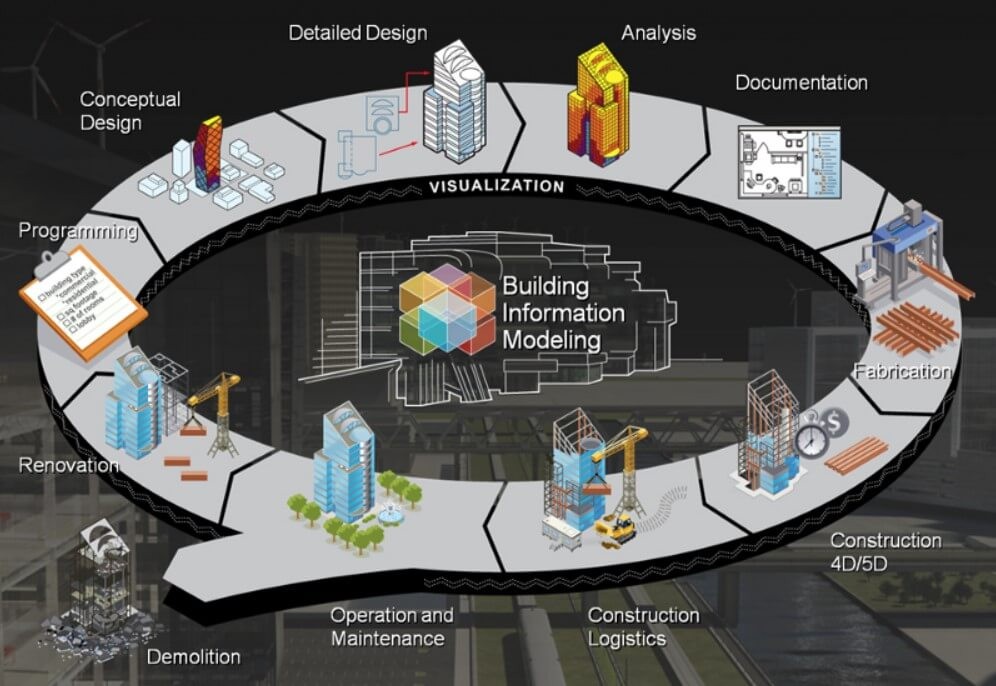Article 3 Industries Affected by Creative Design Tools
Businesses are actively trying to innovate for the future — but what does that mean?
By Isabel Ticlo / 20 Dec 2017 / Topics: Data and AI Software Intelligent edge
By Isabel Ticlo / 20 Dec 2017 / Topics: Data and AI Software Intelligent edge

According to Digitalist Magazine, the top four challenges workers in the construction industry face today are: poor productivity and profitability, completing projects on time and budget, a shortage of skilled laborers, and sustainability concerns. Operating under thin profit margins means there’s no wiggle room for design flaws, communication delays or waste.

Building Information Modeling (BIM) software solves those problems. It’s an intelligent 3–D tool that enables architects and engineers to effectively move through the construction process. As a digital representation of the physical and functional components of a project, BIM can map out the conceptual design, document costs and time predictions, and facilitate analysis, as shown in Figure 1.
BIM software platforms, such as Autodesk AutoCAD Civil 3D and Revit, not only increase worker productivity, but also your company’s ability to compete in the industry.
Mobile tools on- and off-site are also changing the ways construction laborers work. By connecting devices, locations and data securely, proactively warding off threats and responding quickly to resolve any issues that arise, you can ensure seamless collaboration throughout projects. This means improved communication and fewer setbacks, errors and delays — which may have stunted processes in the past.
Similar to the First Industrial Revolution of the late 1700s and early 1800s, we are experiencing a digital revolution in manufacturing. From Artificial Intelligence (AI) and the Internet of Things (IoT) to integrated Computer-Aided Design and Computer-Aided Manufacturing (CAD/CAM) software, technology is transforming the industrial space.
AI robotics provide greater output with consistent quality and can handle tasks too hazardous for workers. IoT-enabled machines on the factory floor can collect data from equipment, employees and past projects to help businesses make profitable decisions that increase performance. By tracking your manufacturing process, you can also reduce order-to-delivery time, enact faster repairs and improve accuracy in real time.
CAD software reduces costs by creating prototypes and mockups prior to development. Gone are the days of trial and error — now, you can see how a machine will work and generate precise tool paths from your computer. With simulations and 5–axis CAM, you can also connect with specialized applications to create complete products and help your teams launch designs faster and easier.
The special effects and graphics showcased in today’s video games, TV shows and movies are leagues beyond what was possible just 10 years ago. Remember Pong? Released in the 1970s, it was the catalyst of subsequent video games. But where a simple, pixelated ball and peg were good enough “technology” then, most games today need to include 360-degree pans, expressive characters and visually stimulating settings. The same goes for movie effects and Computer-Generated Imagery (CGI).

With tools such as Autodesk Maya and 3ds Max, artists can create the compelling effects and stunning displays expected in modern media. Animation, modeling, simulation and rendering software reduce the time it takes to create rich visualizations that stand out and impress users. In addition to end-to-end creative tools, smart software management for design tools can help businesses streamline deployment and standardization — and create cost savings for future developments.
You can accomplish amazing things when you have the right tools at your disposal. Autodesk Industry Collections maximize the value of AutoCAD, Revit, Inventor, Maya and 3ds Max so you can architect, engineer, design and create — without limitations. Autodesk puts boundless design at the core of its software.

Discover reports, stories and industry trends to help you innovate for the future.